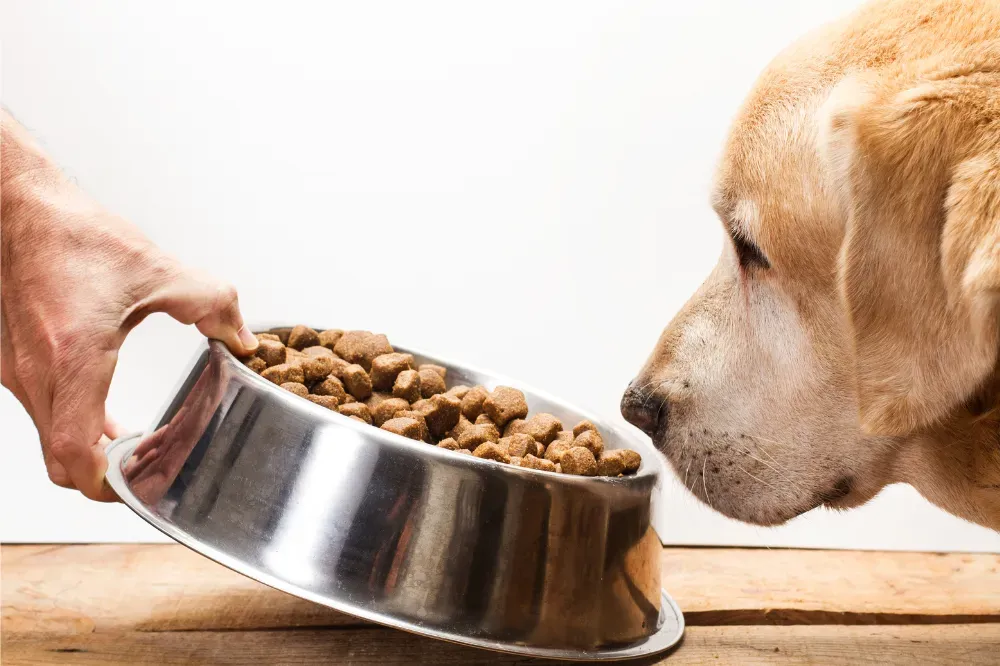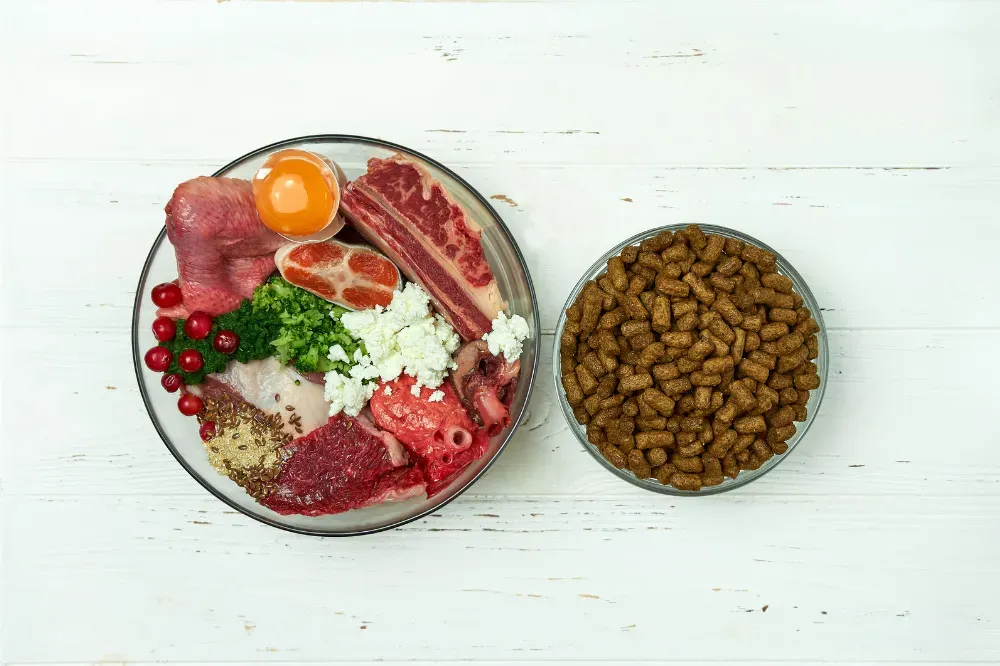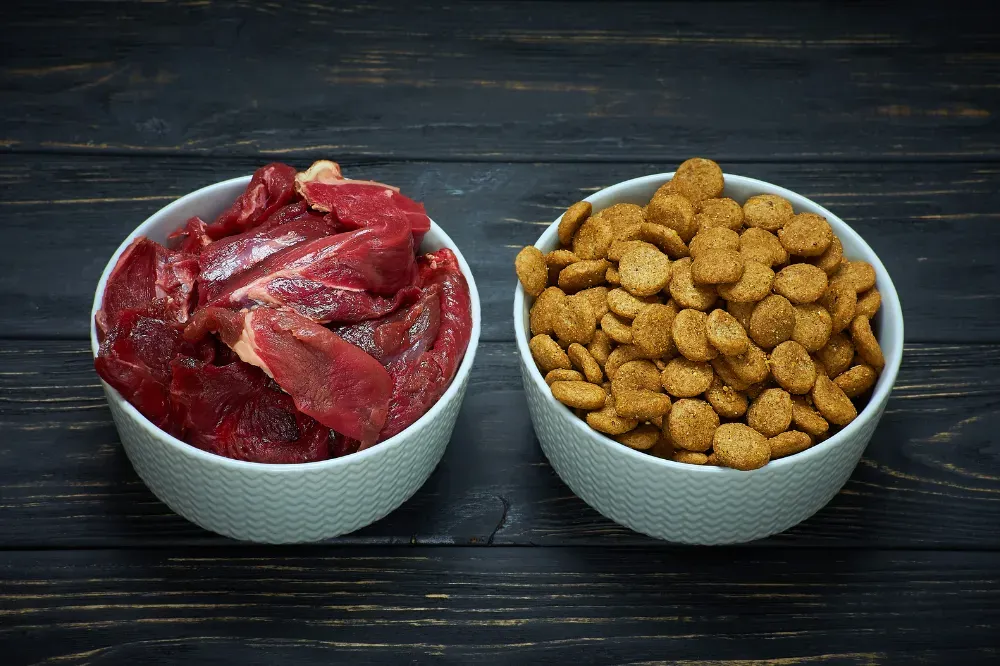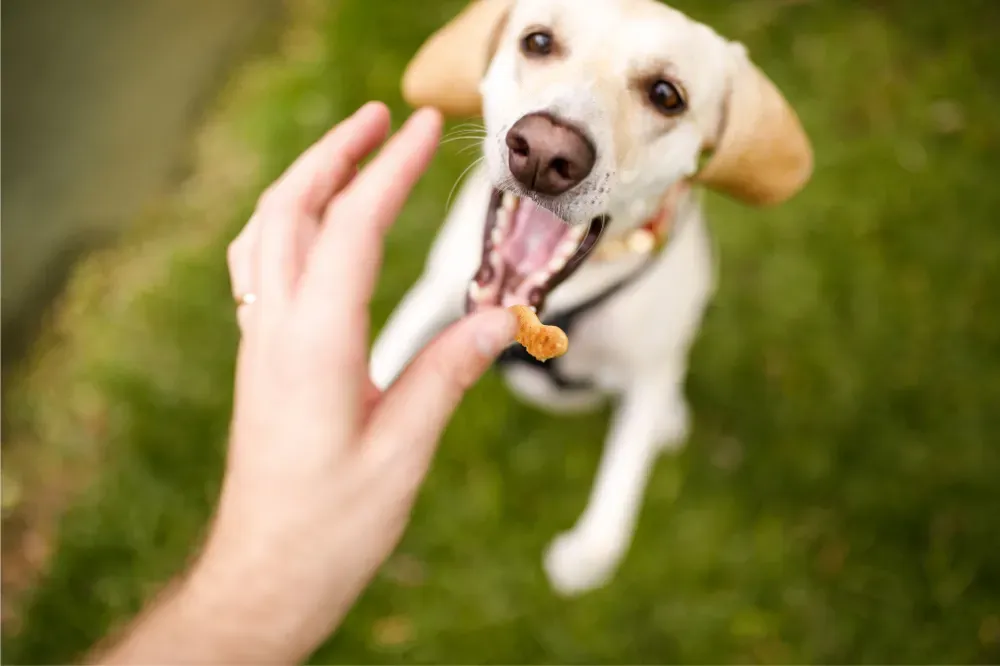Canine diabetes is a prevalent condition that requires careful management, especially regarding diet and treats.
This article aims to provide comprehensive information about diabetes in dogs, including causes, prevention methods, and the best dietary choices for dogs living with this condition.
Understanding and Managing Dog Diabetes

In recent YouTube videos, dog nutrition and home remedy specialist Dan Scott and Dr. Shawn Baker, an orthopedic surgeon with a passion for nutrition, provides an in-depth look at diabetes and nutrition in dogs. Dan explains the causes, symptoms, and management strategies for this increasingly common condition.
Understanding Dog Diabetes
Dog diabetes is a serious condition characterized by insufficient production of insulin, a hormone necessary for regulating blood sugar levels in the body. Canine nutrition and home remedy specialist Dan Scott explains that although there's no standard classification of diabetes in dogs, it is commonly described as either insulin deficiency diabetes (also known as primary diabetes) or insulin resistance diabetes (secondary diabetes).
Insulin deficiency diabetes, or type 1 diabetes, refers to a situation where the dog's body cannot produce enough insulin due to the destruction or dysfunction of the beta cells in the pancreas. This lack of insulin production means that sugars from food cannot be broken down effectively, leading to elevated blood sugar levels. This form of diabetes is similar to type 1 diabetes in humans, which also involves a lack of insulin production.
On the other hand, insulin resistance diabetes or type 2 diabetes, although less common in dogs, occurs when the body produces sufficient insulin, but other medical conditions or hormonal drugs inhibit its utilization. In these cases, despite the normal or even increased insulin production, the body reacts abnormally to the insulin being produced, rendering it ineffective.
Understanding the types and causes of diabetes in dogs is crucial for managing the condition effectively. Whether it's insulin deficiency or insulin resistance diabetes, the aim is to ensure regulated blood sugar levels in your pet for their overall health and well-being.
Recognizing Diabetes in Dogs

Diabetes in dogs is a condition that typically develops gradually over several weeks, often making it challenging to notice in its early stages. However, understanding the key symptoms can help pet owners recognize this potentially severe health issue more quickly and seek timely veterinary care.
Primary Symptoms
The primary symptoms of diabetes in dogs include increased water consumption and frequent or excessive urination. These signs occur due to the body's attempt to flush out excess sugar from the bloodstream, which leads to increased fluid intake and subsequent urination.
Alongside these symptoms, dog owners may also notice an increased appetite with unexplained weight loss or maintained weight. This unusual combination results from the body's inability to use glucose effectively for energy, causing it to break down stored fats and proteins instead, leading to weight loss despite an increased food intake.
Additional Symptoms
Additional symptoms include fatigue, possible vomiting, and a change in the smell of the dog's breath to a sweet or fruity odor due to the presence of ketones, byproducts of fat metabolism. Some dogs may also have sticky urine, another sign of high sugar levels.
In some cases, the development of cloudy eyes or cataracts may indicate diabetes. The high blood sugar levels can cause changes in the lenses of the dog's eyes, resulting in cloudiness or even sudden blindness.
Recognizing the symptoms of diabetes in dogs is crucial for early intervention and treatment. If you notice any of these symptoms in your dog, it's advisable to consult your veterinarian immediately.
Understanding Dog Diabetes and Its Connection to Diet

Dog diabetes is a growing health concern, and both canine nutrition specialists Dan Scott and Dr. Baker, an orthopedic surgeon with a passion for nutrition, emphasize the significant role diet plays in this disease. Many dogs are fed diets high in carbohydrates, often low in protein, predominantly through commercial dog foods and table scraps. These diets, laden with sugars, fats, and refined carbohydrates, can contribute to the onset of diabetes. Furthermore, such unhealthy diets are a contributing factor to the rising rates of overweight and obesity among dogs, which are known risk factors for diabetes.
While some may attribute the cause of diabetes in dogs to factors such as obesity, genetics, vaccine and steroid side effects, and pancreatitis, Scott asserts that a poor diet is the primary cause in most cases. He explains that dogs on a kibble diet consume an excess of refined carbohydrates and sugars, which can damage or exhaust their pancreas over time.
A diabetic dog requires a specific dietary approach to manage this condition effectively. According to Scott, a diabetic dog should be fed a low-carbohydrate, high-protein diet. Kibble, which is typically high in carbohydrates, is not suitable for diabetic dogs. This is because carbohydrates convert into sugar as soon as they enter the dog's digestive system, causing a spike in blood sugar levels.
Understanding the connection between diet and dog diabetes is crucial for prevention and management. The right diet can make a significant difference in controlling this disease and improving the quality of life for your pet.
The Power of a Natural, Protein-Rich Diet

Scott and Dr. Baker concur that all dogs, regardless of breed, thrive on a diet of raw meat and bone. They caution against commercial dog foods, which often contain byproducts, bulk grain, artificial additives, and only a small amount of real meat. This unhealthy composition can disrupt a dog's system and contribute to diseases like diabetes.
A natural diet of raw meat and bones provides live enzymes, phytochemicals, antioxidants, vitamins, minerals, and over 35 proteins that dogs need to heal, protect, and maintain their immune system. This diet, devoid of preservatives, additives, sugars, and unnecessary fats, aligns with a dog's physiological needs and supports their path to excellent health.
Dr. Baker points out that dogs' digestive tracts are similar to humans, but they are more optimized for a higher protein diet due to their shorter small intestine and smaller brain size, which requires less energy per kilogram of body weight.
One effective approach to feeding dogs a protein-rich diet is the BARF diet, consisting of raw meat and a small amount of raw vegetables. Many dog owners report improvements in their pets' health when switching to this diet.
The Role of Intermittent Fasting
Another aspect to consider in canine nutrition is intermittent fasting. In nature, dogs do not have continuous access to food, leading to an episodic eating pattern. Overfeeding can lead to obesity in dogs, just as it does in humans. Therefore, feeding dogs in a pattern that mimics their natural eating habits can be beneficial.
Both Dan Scott and Dr. Shawn Baker emphasize that a change in diet is key to preventing and healing dog diabetes. Opting for a natural, protein-rich diet and considering intermittent fasting can help your dog avoid serious diseases and enjoy a healthier, happier life.
Managing Dog Diabetes Naturally

According to Dan Scott, managing diabetes in dogs naturally is a viable approach that can lead to long, healthy lives for these pets. His key recommendations revolve around using natural alternatives to insulin supplements and prioritizing a healthy diet.
Scott's experience with dogs shows that it's possible for them to recover their health sufficiently to stop insulin injections or switch to a natural insulin alternative. However, the possibility of returning a dog to a non-diabetic status largely depends on the extent of damage sustained by the pancreatic insulin-producing beta cells.
Diet plays a critical role in managing diabetes in dogs. Scott insists that diabetic dogs need to switch from the traditional kibble-only diet, which is high in carbohydrates and sugars, to a diet suitable for their condition. Such a diet change, combined with plenty of exercise, is essential for traditional insulin or natural alternatives to work effectively.
If your dog is already on insulin, Scott recommends working closely with your vet and regularly testing your dog's blood sugar levels. Despite this, he strongly advises against using a prescription diet, even if your vet highly recommends it.
Dan Scott highlights the crucial role of diet, natural alternatives, and exercise in managing dog diabetes. By understanding the symptoms and causes and implementing appropriate management strategies, dog owners can significantly improve the health and quality of life of their diabetic pets.
Kibble and Treats for Diabetic Dogs

How to Pick the Healthiest Kibble for Dogs
Selecting the healthiest kibble for your dog can be a daunting task, given the numerous options available in the market. In a YouTube video, Dan Scott provides valuable insights into how to make this critical choice.
According to Scott, there are five key considerations when choosing the healthiest kibble for your dog:
- Low Carbohydrates: Contrary to popular belief, dogs do not require carbohydrates in their diet to thrive. Hence, the first thing to consider is that the kibble should have minimal carbohydrates.
- No Corn, Rice, Potatoes, Wheat, Soy, or Barley: These ingredients are high in carbohydrates and often genetically modified organisms (GMOs), contaminated with mycotoxins, and contain high levels of Glyphosate. Therefore, it's crucial to avoid kibbles that contain these ingredients.
- Naturally Derived Vitamins and Minerals: The kibble should contain naturally derived vitamins and minerals, as synthetic alternatives are not well absorbed or recognized by your dog's digestive system. Synthetic nutrients often lead to health issues like acidosis, stones, and urinary tract infections (UTIs).
- High Protein Levels: The protein levels in the kibble should be as high as possible, preferably 30%+ on a dry weight basis. Additionally, at least 75% of this protein should be animal-based, so ensure that the first three ingredients listed on the nutrition panel are animal-based.
- Known Origin of Ingredients: Lastly, it's important to know the origin of the ingredients used in the kibble. While a manufacturer might claim that their product is made in the USA, the ingredients could be sourced from other countries like China. Therefore, always inquire about the origin of the ingredients from the pet food manufacturer and stay vigilant.
In conclusion, selecting the healthiest kibble for your dog involves understanding your dog's nutritional needs and being aware of what goes into the food you're feeding them. Following these guidelines outlined by Scott can help ensure that your dog is getting a balanced, nutritious diet.
The Best Diabetic Dog Treats

Understanding how diabetic dog treats differ from regular ones is essential for pet parents. Incorporating natural diabetic dog treats into your diabetic dog's diet can greatly help manage their condition. They are typically made with ingredients that have a low glycemic index, meaning they won't cause a sharp spike in your dog's blood sugar levels.
Avoid High-Carbohydrate Treats
Scott advises against giving your dog treats or any other foods high in carbohydrates, such as corn, and all grains like wheat or rice. Even fruits, which contain sugars, should be avoided.
Alternatives to Kibble
For alternatives to your dog's regular kibble diet, Scott recommends home-cooked food, a commercial diabetes-ready alternative, a homemade raw food diet, or a pre-made commercial raw food diet. It's important to note that a regular kibble-only diet or vet prescription diet can worsen your dog's condition.
One excellent option for diabetic dog treats is Ella's Dog Treats. Made from pumpkin and sweet potato, they are rich in dietary fiber and have a low glycemic index. These treats are not only tasty but also beneficial to a dog's digestive health. Another recommendation is PureBites Chicken Breast for Dogs. These treats are freeze-dried raw to preserve their natural nutrition, making them a high-protein, low-carbohydrate option for your diabetic dog.
Additionally, certain vegetables, like green beans, can make great natural diabetic treats. They're low in calories and carbohydrates and can be served steamed, chopped, or whole. However, it's always advisable to consult with a veterinarian to understand the best diabetic dog treats for your pet's specific needs. By choosing treats with a low glycemic index, pet parents can ensure they contribute positively to managing their diabetic dog's diet.
Conclusion
In conclusion, managing diabetes in dogs requires a comprehensive approach, focusing on a balanced, high protein and low carbohydrate diet. Kibble, particularly those containing high levels of carbohydrates, GMOs, and synthetic nutrients, should be avoided.
Instead, consider alternatives such as home-cooked foods, commercial diabetes-ready alternatives, or a raw food diet. Treats high in carbohydrates and sugars are also detrimental to diabetic dogs.
By understanding and applying these nutritional guidelines and working closely with your vet, you can significantly improve the health and quality of life of your diabetic dog.








